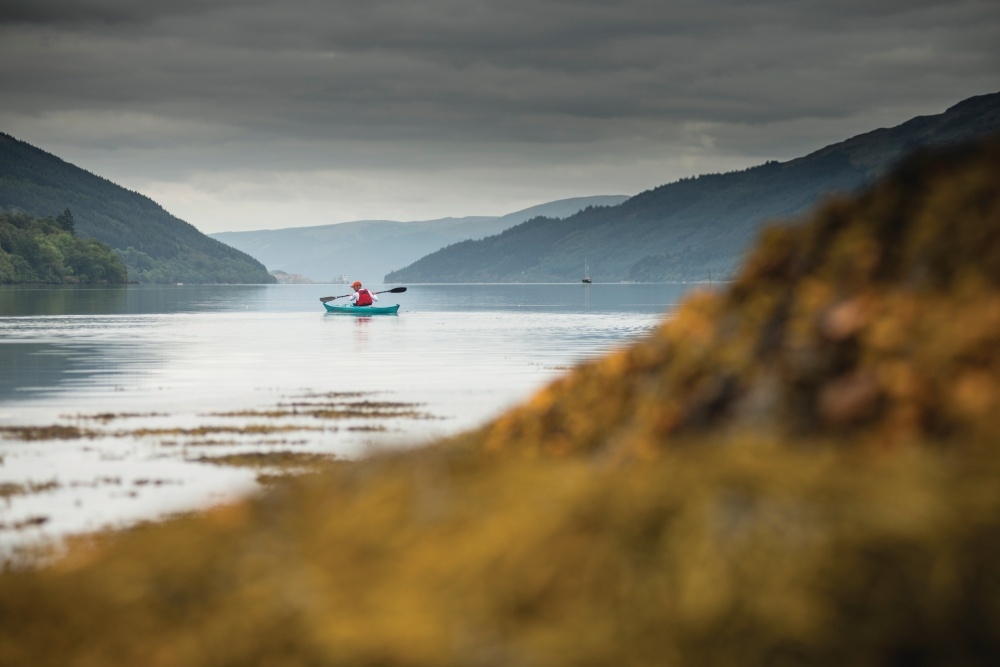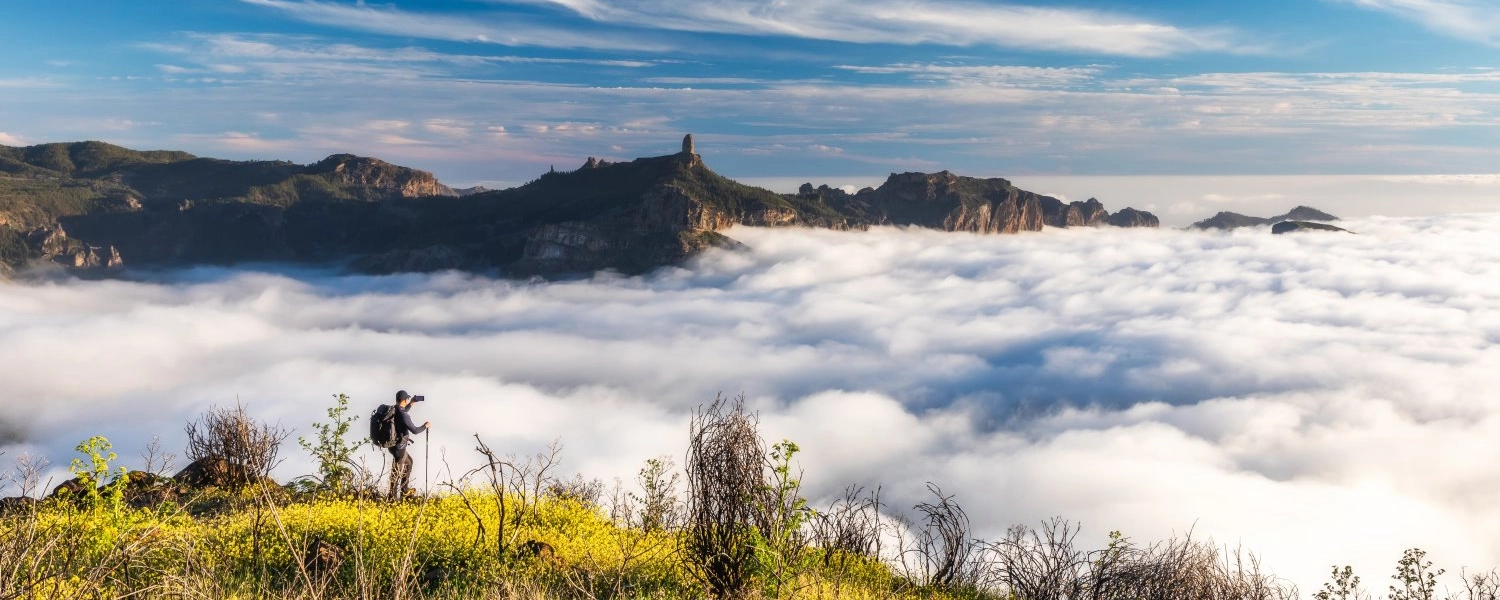- Details
- Written by: Mike Walker
The water is billiard table flat as I lie back on my seat rest and stretch my arms after the long paddle back inland. With the end of my day’s paddle almost in sight, I lace my hands behind my head and marvel at the magnificent mountains wrapping around me and my boat, their perfect reflection on the water creating an impressive symmetrical amphitheatre.
Thankfully I’ve chosen a blue sky and calm day, because even in mid-summer the west coast of Scotland can be a wild place when Mother Nature goes on the attack, and today has been all about enjoying a cruise rather than enduring a tough expedition.
After a long morning exploring the loch, which continues south-west towards the Firth of Clyde and the open sea, I can finally see the houses of Arrochar up ahead again. This little village sits near the head of Loch Long where the Western Highlands tumble down to this straight, finger-like reach of water on Scotland’s stunning west coast. Easily accessed via the A83 from Glasgow just an hour away to the south, this is the perfect base for a Western Highlands sea loch adventure.
Vertical challenges
There’s no shortage of on-land adventure opportunities either. Ahead, far beyond and above the village itself is the unmistakable triangular peak of Ben Lomond, while behind me towers the silhouette of the Cobbler, whose difficult summit I’m also hoping to tackle in the next few days.
Although at 884m high the Cobbler is not high enough to be a Munro, this popular climb involves crawling though a hole to reach the summit – a route that is known as ‘threading the needle’.
Glancing up again at the huge masses of Ben Narnain and the Cobbler looking down approvingly, I hope that the weather is just as calm when I decide to tackle their vertical challenges.
These two famous peaks form part of a number of hills known as the ‘Arrochar Alps’. There is a classic hill race here of the same name each year in late June, with Narnain the last hill in a four-peak course also taking in the nearby Munros of Ben Vorlich, Ben Vane, and Ben Ime.
For a lower level route the out-and-back walk from Arrochar to the picturesque Loch Sloy at the base of Ben Vorlich is a stunner and there are plenty of spots for post walk refreshments.
I push back and settle into the rhythm of paddling again, this time heading diagonally down the loch, the decaying wooden structure of the now defunct Royal Navy Torpedo Range on my right. It was still testing torpedoes up until 1986 but it looks like it’s been deserted ever since. To my left, the West Highland train line carries its passengers north and on to Fort William. The rhythmical noise of its passage seems to combine well with my paddling stroke and I’m making good progress, as my kayak cuts through the calm water, tracing out an impressive V line behind me. Loch Long slices through the mountains here and it feels very much like I’m doing the same.
There’s birdlife aplenty but humans are wonderfully scarce. It’s almost a surprise when a small boat whizzes by and its wake corrugates the otherwise glassy clam waters, causing my kayak to gently rise and fall a couple of times, before the ripples on the water, along with the buzz of the boat engine fade out and stillness once more takes hold.
Time for a brew
The entrance to Loch Goil now appears on my right-hand-side and I turn into it. I look at my watch and see that, somehow, I’ve been paddling for almost two hours since Arrochar. With a leg stretch, toilet break and cup of tea on the cards and in that order, I beach next to the impressive Carrick Castle, climb out and make a brew, sitting on the bow of my kayak while I savour the refreshing hot liquid and glorious views.
An integral part of any good sea-kayaking excursion is catching dinner, and in my experience, the best fishing is either on an incoming tide or just off it.
So turning back north-east to head up Loch Long, I can feel the tide now in full flow pushing me back but high tide is only an hour away, so I get ready for a spot of fishing. There’s no need for the spray deck from now on, so that is safely stored in the front hatch. Then hand line at the ready, I head off again.
As soon as the water turns black I know I have a good depth below me and I drop my line. Mackerel tend to roam around in large shoals and the temptation is to fish with several lures to pull up as many fish as possible each time. But I’ve long since given up being concerned about numbers – if the mackerel are there you will get them – so I never opt for more than three lures. Any more and I quickly realise that thrashing fish, hooks and my flesh don’t combine happily in a kayak’s cramped cockpit.
The pace of progress has slowed down considerably and why not? There’s no rush. The tide alone will push me back to Arrochar so I drift casually back up the loch, occasionally adding the odd paddle stroke or two just to stop myself from falling asleep. But there’s no time to drop off as the line suddenly jerks with that familiar feel of snagged marine life underneath me. Straight away from the movement and strain on the line – varied and heavy – I can tell I’m into a shoal with several fish hooked.
I go about winding in my line, looping it carefully but at a decent speed around the plastic hand line. I soon see the sparkles of light in the water below as I bring up three good fish, their magnificent emerald mosaic-like colours shimmering brightly in the summer sun. I get them all into the cockpit and quickly go about snapping their heads back to ensure a quick and humane end.
My target haul is about ten. It’s enough for a late lunch, plus some to take back and share with the family over a barbecue.
Dropping my line once more, I wait expectantly but after a few minutes it’s clear that this time the shoal must have moved on. So I secure the line, pick up the paddle and continue at a leisurely pace back toward base.
It’s not long before I’m in again, this time two fish. I continue to drop my line, catch fish and slowly head back. By the time I’m level with the village, I’ve reached my target of ten.
Fish supper
Back on dry land, I take the fish out and gut them on the slipway. As usual, marvelling onlookers gather and they all ask me the age-old question “Where did you get those?” I simply raise my eyebrows and point my filleting knife to the stretch of the vast expanse of Atlantic Ocean directly behind me. Yes I know - fish from the sea…
I do feel a bit like Victor Meldrew as I decide to avoid any other obvious questions and head on foot up the shoreline to cook. Portable barbecue lit, there’s just enough time to fire up my stove and make a cup of tea, though I do have to confess a glass of chilled Pinot Grigio would be more welcome.
Alcohol resisted, I sip my brew and watch the water ever so gradually rise around the pebbles under my feet. Such an integral part of the natural balance of this coastline’s ecology, the ever-predictable twice-daily ebb and flow of the tide is always reassuring.
The barbecue is now white-hot so two fish go on. Straight away they curl up with their oil sizzling as it drips onto the coals below. West coast air and barbecuing freshly caught mackerel combine to create an aroma that is hard to beat, reminding me as only a smell can do of many such outdoor adventures.
As I throw the bones to the seagulls who noisily scream their thanks, my mind turns to other spots nearby where I could try a similar trip. Loch Fyne is slightly farther west and apparently it has a far greater variety of species than Loch Long. I’d love to catch a cod for example, although its potential size is both an attraction and a concern given that I’d be trying to land it in a kayak. I’ve previously caught both pollack and coal fish (also known as saithe) from my kayak but mackerel is still my favourite to eat.
I take time to sit and watch the birds diving into the velvety calm water, as the sun starts to close on the mountainous skyline and the light begins to slip away.
I decide it’s tomorrow I’ll be swapping my boat for hiking boots to take on the Cobbler. There’s just so much to do in this land of mountains and water but I can’t help not wanting this kayaking adventure to end.
The only thing that beats a day on the water is several days on the water. The recently established Argyll Sea Kayak route looks a great fit – 150km long in total and running from Helensburgh to Ganavan just north of Oban it has incredible kayaking adventure potential. Paddling the whole thing would be a dream but as it is conveniently broken up into small chunks ranging from 13k to 29k there are plenty of options.
Perhaps I could paddle the whole thing eating just the fish I catch? Now there’s a challenge. Though I’m not sure I could manage it all without that glass of Pinot!

